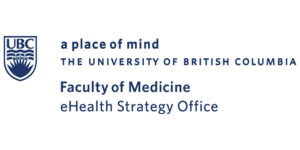Documentation:EHealth Strategy Office/Tech Support/Website/Project Templates
Project Pages
As you know, a major section of our website is the pages that describe the projects and any related actvity. These pages will eventually have two major sections: project information and related posts.
Project Information
Project information is general information about the project, designed to give website visitors a sense of the purpose and goals of your project. This information should be relatively static throughout the life of the project, and will likely draw heavily on the proposal that was used to create or fund the project.
The accuracy and currency of the project information is the responsibility of the assigned Research Coordinator.
This information will not generally be duplicated in blog posts updating visitors about the project, but will instead exist to be referred to if someone would like more information about a project. Blog posts about current project activity should be created as posts in WordPress, and assigned the appropriate Project category, so they will appear below.
Related Posts
Blog posts should be written periodically about project activity (see Blogging Best Practices). When you create a blog post about a project, it should be assigned a Project Category that will add the post to a list of all posts about that project.
The Related Posts section of each project page will display all these blog posts that have been assigned the project category. The most recent posts will appear in an automatically updating list called a loop.
The loop will be put in place after the creation of the project information has been finalized.
Page Structure
To achieve as much consistency as possible, please use headings in your project inforamtion that are similar (if not exactly the same) to the other projects as much as possible. We recognize that not every project may fit into a given template, but we want our pages to be as consistent as possible. Please consider the following common headings when creating your page.
Headings
- Background
- Purpose
- Overview
- Highlights
- Project Partners
- Project Team
- Contact
For an example, please see the InspireNet page.
To create headings in the visual editor, select the line of text that you want to be your heading (e.g. "Purpose") and select Heading 2 from the styles menu.
Warning
Once the project information sections have been finalized for your project, a member of the BWG will insert the code necessary to power the Related Posts section. This will make it difficult to make edits to your project inforamtion without using the HTML editor.
If you need to make changes to your project information after the loop has been added to your page, please ask for assistance before publishing.

